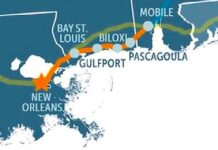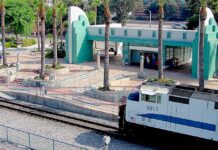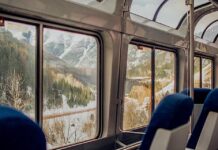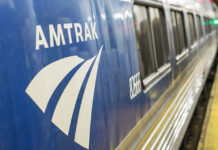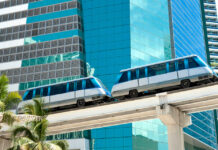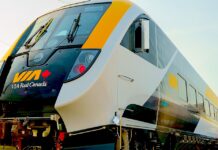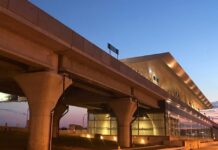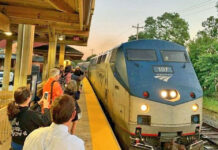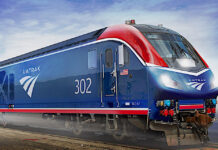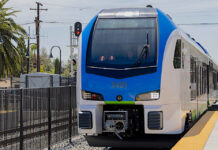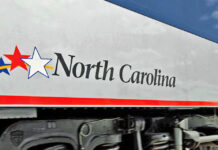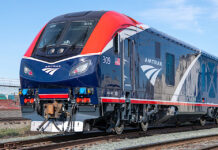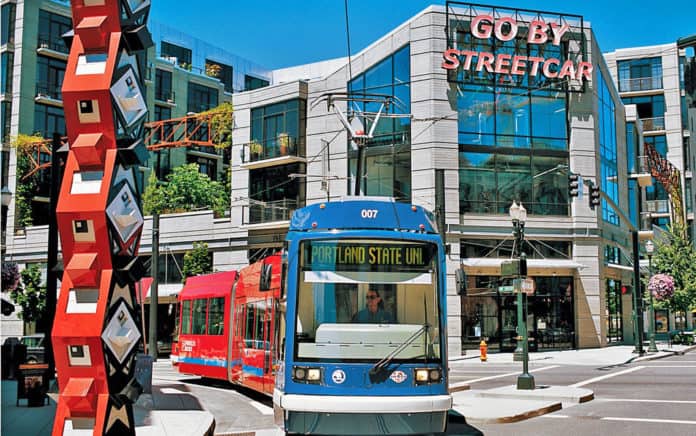
The Pacific Northwest is a microcosm of all that’s great about train travel in the USA and Canada. The PNW region has long-distance service to a number of major cities and popular destinations on both sides of the border. It’s also home to North America’s only international passenger rail corridor — linking Oregon, Washington state, and British Columbia. Long-distance and regional rail services are integrated with exemplary intermodal rail and transit in the region’s three major metros.
Amtrak Cascades
Because the Pacific Northwest straddles the international border, the region is served by two national carriers: VIA Rail Canada and Amtrak. Within the region, Amtrak does the heavy lifting with its border-crossing Amtrak Cascades making multiple runs connecting Portland, Oregon; Seattle, Washington; Vancouver, British Columbia and over a dozen other stops including Bellingham, Tacoma, Salem, and Eugene.
A pair of legacy long-distance trains extend Amtrak’s reach down the Pacific Coast and east, more than halfway across the country.
Amtrak Coast Starlight
Connecting Seattle and Portland with the San Francisco Bay Area and Los Angeles, the Coast Starlight is among Amtrak’s most popular long-distance journeys. The storied train runs along the Cascades Range, skirting Puget Sound, driving through the Willamette Valley, and stopping at Klamath Falls before continuing past Mount Shasta to Sacramento and through Santa Barbara along California’s Pacific Coast.
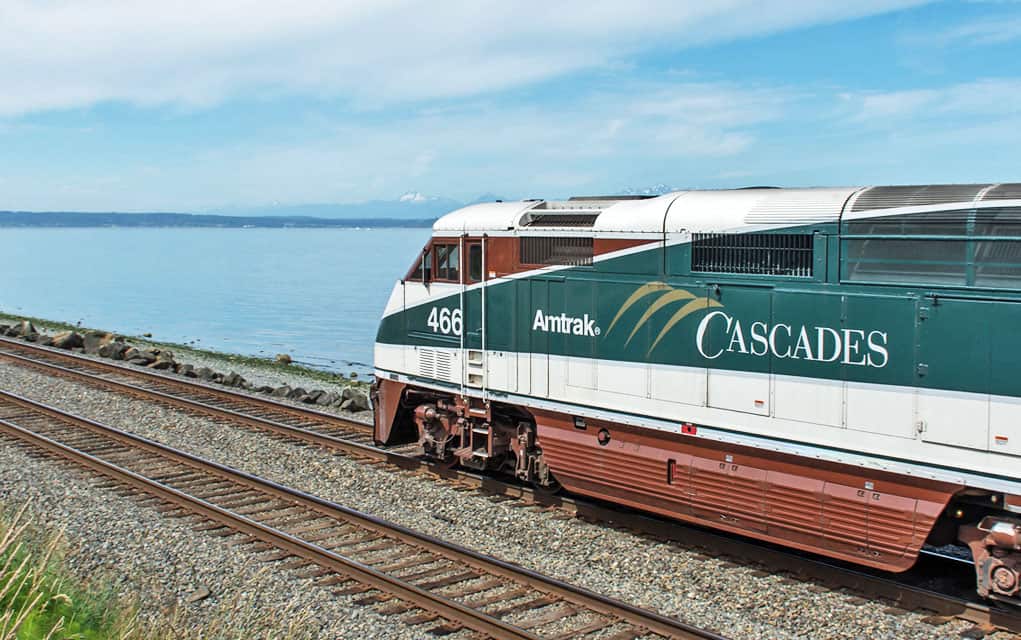
Amtrak Empire Builder
Crossing Red Sky Country and Montana’s Rocky Mountain Front, the Empire Builder is the Pacific Northwest’s Great Lakes connection and Amtrak’s most popular long-distance train. Truncated trainsets connect Seattle and Portland with combined Chicago service via Spokane, Glacier National Park, Fargo, St. Paul/Minneapolis and Milwaukee.
VIA Rail Canadian
But for many east-bound travelers, the way to get the most bang for their buck (or Loonie) is to head north to Vancouver and catch a ride aboard the Canadian. Via Rail’s signature transcontinental train crosses Canada’s Rockies as it covers North America’s longest-distance passenger train route between Vancouver and Toronto via Jasper, Edmonton, Saskatoon, and Winnipeg.
VIA Rail Jasper – Prince Rupert
VIA Rail also makes a wilderness connection that enables Canadian passengers and Rocky Mountain vacationers to make North Coast BC and Alaska Marine Highway ferry connections. The Jasper, Alberta to Prince Rupert run — once officially and still affectionately called the “Skeena” — pauses its 1160 km (720 mi) journey with an overnight halt at Prince George.
Rocky Mountaineer
The Rocky Mountaineer offers a third rail option between the Pacific Northwest and the Rockies. Luxury rail cruises follow the most scenic rail route between the region and the Canadian Rockies; Vancouver to Jasper and Calgary (Seattle departures have been discontinued for the 2020 season).
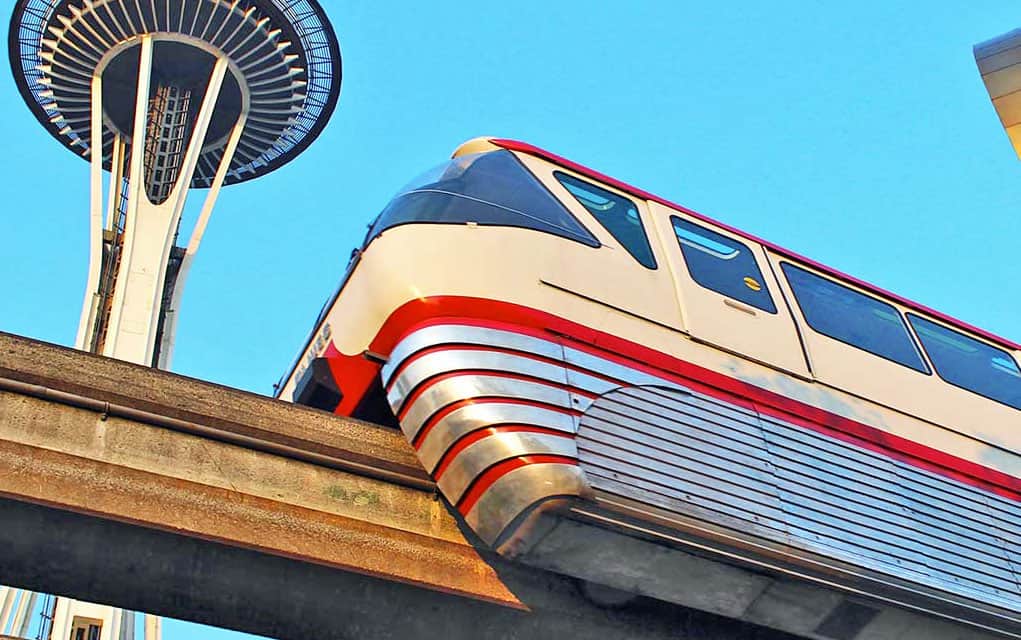
The Pacific Northwest’s three major cities have all made their marks in the world of modern urban rail transit. Vancouver’s Skytrain and Portland’s trolley have both gained notoriety in the last few decades. But it is Seattle’s Jetsonian monorail that garners most of the attention.
Seattle
Seattle’s King Street Station is among Amtrak’s busiest stops and the departure point for Sounder commuter trains to suburbs like Everett and Tacoma. From King Street Station, its a one-stop hop on the Seattle Streetcar (Chinatown/International District) to Pioneer Square where Link light rail trains connect with Sea-Tac Airport and Westlake Center, the city’s busy center city transit hub. From Westlake, Link light rail continues north to Capitol Hill and the University of Washington. Westlake is also one of the Seattle Center Monorail‘s two terminals, the other being at the Space Needle in Uptown’s Seattle Center cultural and entertainment hub. The easiest way to get around the Seattle area is with an Orca Card. The transit fare cards are available from ticket machines in stations and transpo centers.
Portland
Portland’s Amtrak Union Station and its adjacent Transit Mall set the pace for this transit-friendly city. Its Portland Streetcar lines loop around downtown and head down to the Willamette River’s South Waterfront. Along the way, they connect with Tri-Met MAX light rail, the region’s light rail system. The color-coded five-line system connects with nearly 100 destinations including Portland International Airport (Red) and Beaverton (Red/Blue; connect with WES commuter rail to Wilsonville), It’s easy to get where you’re going with a Hop Fastpass available by app and all over town.
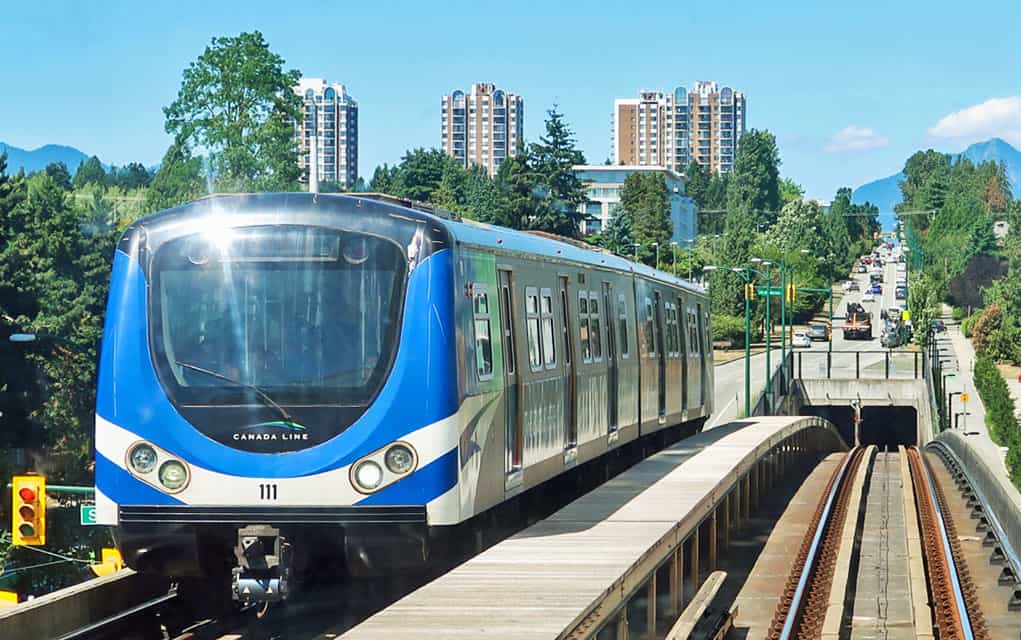
Vancouver
Vancouver’s Pacific Central Station is western Canada’s principal hub for VIA Rail Canadian and cross-border Amtrak Cascades services. Adjacent Waterfront station is linked to the SeaBus, West Coast Express commuter rail, and is the terminus for two TransLink SkyTrain lines; Expo and Canada. Along with a third Millenium line, Van’s elevated rapid-transit system will get you to Vancouver International Airport and just about anywhere else — except Stanley Park; you’ll have to walk two blocks from Waterfront Station and catch a #19 bus for that. Reloadable Compass Cards are available at transit stops and retailers across the region.

